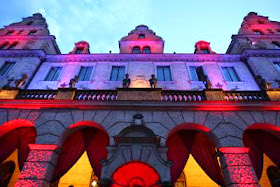Religious Structures
- Regensburg’s many churches are testaments to its significance in the growth of Protestantism. Few examples are more impressive than St. Peter’s Church, a limestone and sandstone edifice that dates back to the 13th century, but was not completed until the 19th. Two looming spires, stained-glass windows and a noted resident choir draw a steady stream of visitors. The Old Chapel began construction in A.D. 875 and remains one of Bavaria’s finest rococo churches. The organ here was blessed by Pope Benedict XVI, a former Regensburg resident. St. Jakob, on the other hand, is a 12th-century Romanesque basilica that used to house Irish and Scottish Benedictine monks.
Museums
- The Domschatzmuseum preserves cathedral artifacts, including 11th-century textiles, but has limited opening during the winter months. The nearby Diözesanmuseum St. Ulrich collection, in a former church, has paintings, sculptures and goldsmith’s work with religious art dating back a thousand years. Regensburg also has four city museums. The History Museum is, according to Frommer’s, one of the most important in Eastern Bavaria, which has relics from Roman times when the city was a Roman garrison.
Notable Buildings
- The town hall, or “rathaus,” often is the most distinctive building in a German city. Regensburg’s Altes Rathaus is preserved in all its glory. Dating from the 13th century, the building has a dungeon and torture chamber in its basement. The remnants of the Castra Regina Roman fortress that gave the city its name still are on show in the center of the Old Town around Dr. Martin Luther King Street, while the Porta Praetoria was the original entry gate to the fort. Stone Bridge is one of the best-preserved bridges to survive from the Middle Ages. Building started in 1135, and they provided a vital protected crossing of the Danube.
Culinary Delights
- Regensburg is an ideal place to explore on foot as its modest size is largely off limits to vehicles. No visit to Germany would be complete without tasting some sausage, and the city’s Sausage Kitchen is the oldest in the world, near the Stone Bridge and St. Peter’s Church. Try a local “wurst” with sauerkraut and mustard. The nearby Salt Warehouse, built in the early 17th century, is a reminder of the importance of the salt trade. Finally, visit the city during December for the enchanting Christmas Markets, which combine food, crafts, and live theater and music.
